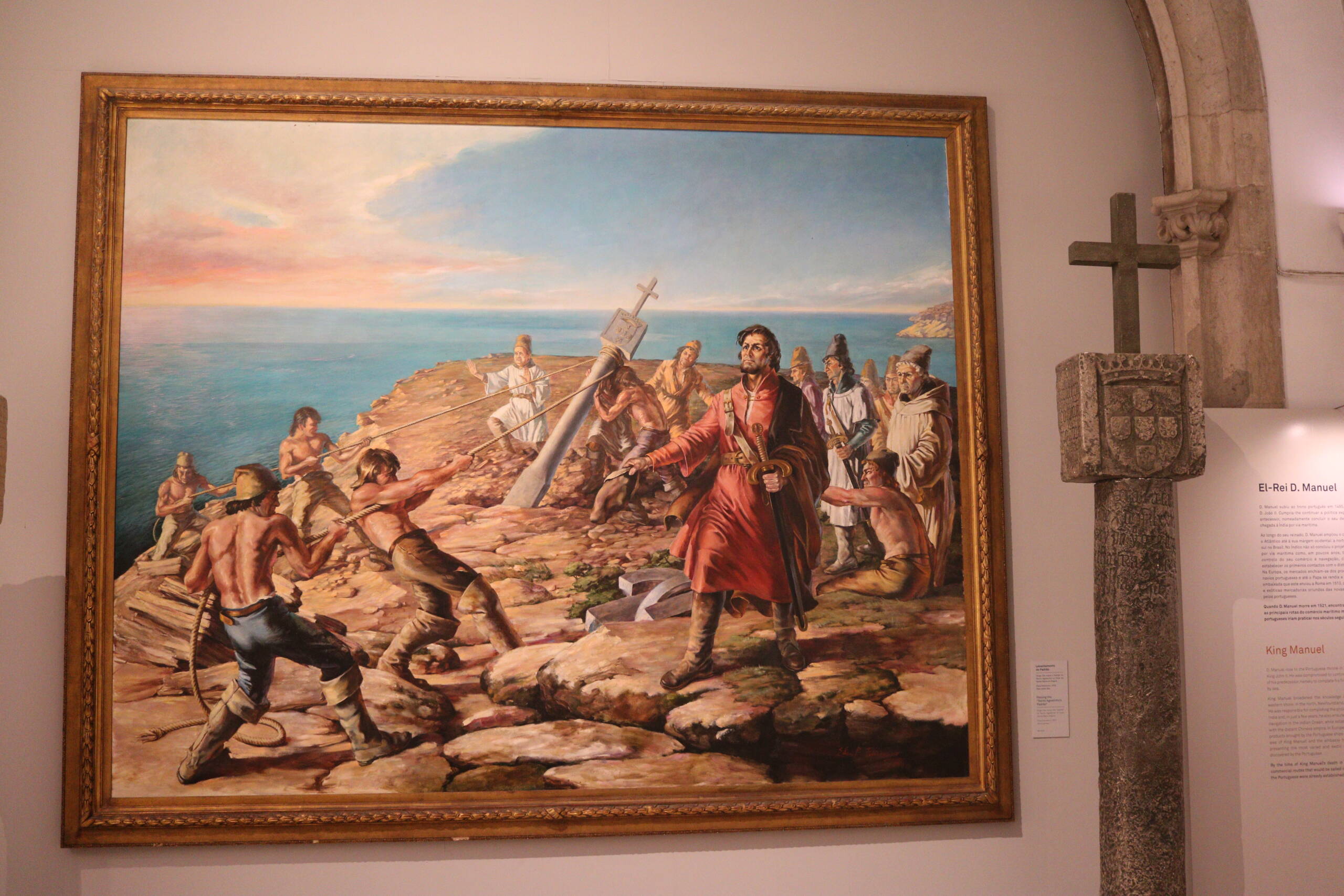Walking into Lisbon’s Maritime Museum, you are immediately surrounded by echoes of Portugal’s great seafaring past. The place feels like a treasury of voyages, maps, and symbols of the Age of Discoveries, and tucked among the grand ship models and royal portraits, there’s one painting that really grips the imagination. It shows a group of men on a rocky headland, straining with ropes and raw muscle to raise a stone cross — a padrão — while the sea opens wide in the background, tinted by the glow of a setting sun. The scene is both heroic and heavy, almost cinematic in its staging.

At the center of the canvas stands King Manuel I, Dom Manuel o Venturoso (the Fortunate), cloaked in deep red, his sword gleaming at his side. His figure dominates not by action but by presence — he isn’t pulling ropes or lifting stones, but guiding, sanctifying, almost blessing the moment. Behind him, advisors, clerics, and dignitaries watch solemnly, while bare-chested sailors labor at the ropes, veins bulging, bodies bent under strain, as if to remind us that empire was built as much on sweat and endurance as it was on royal will.
The symbolism is thick and intentional. These padrões were not just markers of stone; they were declarations of both conquest and faith, monuments planted on distant shores to claim land for the Portuguese crown and the Catholic Church. Seeing this scene inside the museum, right next to an actual carved stone cross from that same era, makes the past feel uncomfortably tangible. You can almost imagine it being dragged ashore from a creaking wooden ship, hoisted up a cliff, and forced upright against the Atlantic winds.
Lisbon’s Maritime Museum isn’t just about ships and voyages — it’s about how Portugal crafted its own story of destiny at sea. This painting, with its mix of sweat, faith, and royal ambition, crystallizes that story in one frame. It celebrates, but also hints at the weight of empire — the effort, the conviction, and the complexities that came with it. Standing there, you find yourself pulled between admiration for the artistry, awe at the scale of Portugal’s global reach, and reflection on the darker legacies left behind.
It’s a reminder that Lisbon isn’t just a beautiful coastal city with pastel houses and trams climbing hills; it’s also a city that once imagined itself as the center of the world. And in the Maritime Museum, staring at King Manuel gazing out to sea as the cross rises, you can almost hear the echo of sails snapping in the wind and the prayers whispered by men who thought they were carrying their faith to the edges of the earth.
Leave a Reply